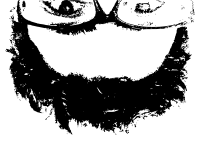🎥 Drive (2011)
Drive is the story of a part-time stuntman, car mechanic and night-time heist getaway driver. What we see are his attempts to save his innocent neighbor from the wrong people.
Our perspective is that of the stuntman, simply known as the “Driver”. He’s initially shown to be a calm, composed expert at driving out of any situation. This harmless appeal plays a major role in endearing him to the audience. In fact, we never see him get violent and go all psychopath until his friend and neighbor’s wife is killed in a heist gone bad. As the true nature of the threats he faces becomes apparent, he transitions to becoming a crusader for all the innocents who die because of being involved with him. As this transition reaches its peak, we’re well aware of, and relate to his thought-process even though we’ve hardly seen any lines being spoken by him.
The screenplay makes overt allusions to the fable of the frog and the scorpion. The Driver’s consistent attire of a white jacket with a golden scorpion on it’s back, is a direct reference to his active role in the plot. Every person he’s involved with, ends up either hurt or dead, directly or indirectly. The plot cleanly places most of the violence in the second half of the movie. At this point, the good guy impression is firmly entrenched in our heads and ready for a masterful smashing. The expression on Irene’s face as she slowly backs away from a dead man with a freshly bashed in face effectively captures the audience’s emotion as well. At that point, we too know that this is no man with a future.
The movie is also a masterclass in terms of building tension, be it romantic or thrill. The first heist’s getaway is a beautiful example of this. It’s use of a police radio as a way to inform the audience and the characters of the situation is an excellent example of Hitchcock’s ticking time bomb. After the adrenaline rush, we’re also treated to soothing images of the Los Angeles cityscape and iconic synth-wave music that winds down the action for the incoming romantic moments. Very few films setup their first half so effectively. The other amazing scene has to be the elevator one. Our emotions are already heightened after the tense exchange between the Driver and Irene over her dead husband. We know both of them are in grief, but this late into the runtime, the movie simply cannot afford to let action rest. After revealing the armed hitman in the escalator, the plot very effectively pivots all the emotional anxiety through a bridging romantic kiss, leading it into a gory act of violence.
Any review for this movie is incomplete without mentioning the stylistic elements. From the font, the retrowave music, the dark and neo-noir lighting all interplay amazingly well to put you in the exact 80s mindset the film-makers want you to be in. But what really steals the show is the emotion and direction of attention merely through the character’s gestures and eyes.
The plot does suffer from slight predictability issues towards the end. Specifically around the mafioso’s motives where it hurriedly tries to setup some flimsy plot for the two mob bosses who’ve just entered the fray. But since Drive is very clearly all about style, being backed by a solid theme and good plot cohesiveness is good enough. One cannot help but indulge in this experience.
Rating: (Good)
